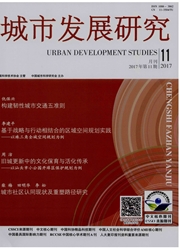

 中文摘要:
中文摘要:
在居民碳排放逐渐成为我国城市碳排放重要组成的背景下,研究空间形态对居民碳排放的影响对构建低碳城市至关重要。选取北京14个社区,以入户问卷的方式收集居民碳排放数据;并借助GIS比较不同类型社区的碳排放特征,力图在控制社会经济变量的基础上,明确空间形态对居民碳排放的影响程度。研究发现:1)综合3类指标11个变量,14个社区可以分为5个类型;2)从城中村,到传统胡同、邻里单位、普通商品房、封闭街区,各类型社区的居民碳排放量依次升高;3)社会经济属性对居民碳排放的影响程度要大于社区空间形态,但后者对居民碳排放同样有显著影响。基于研究从社区规划的角度为建设低碳城市提出政策建议。
 英文摘要:
英文摘要:
It is imperative to identify the impact of spatial form on household carbon emissions, so as to construct low-carbon cities. This study chose 14 neighborhoods in Beijing and collected household emissions data by questionnaire survey. Specific emission characteristics were identified in the five types of neighborhoods by using GIS. The impact of spatial form on household carbon emissions was investigated in details, by controlling the impact of neighborhoods' socioeconomic condition. It is found that, in general, neighborhood's household carbon emissions increase in the sequence of urban village, traditional hutong, socialist Danwei, commercial apartment building, and segregated neighborhood. Though the impacts of socioeconomic factor is more significant than those of spatial form, the latter do have direct influence on household carbon emissions. Finally specific policy suggestions for constructing low carbon city are proposed from the perspective of low carbon neighborhood planning.
 同期刊论文项目
同期刊论文项目
 同项目期刊论文
同项目期刊论文
 期刊信息
期刊信息
